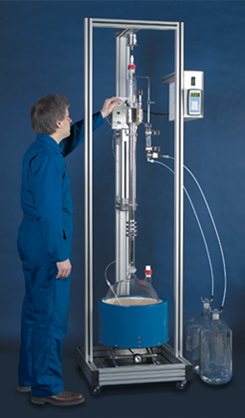Acetonitrile Solvent Recycling
HPLC solvent recycling is a unique application since HPLC solvents are usually mixed with large amounts of water (sometimes as much as 90% water). The addition of large amounts of water greatly increases the volume of waste solvent. As a result, costs for disposal of the used solvent can be much higher than the actual purchase cost of the original solvent. So the savings from recycling HPLC solvents can be quite significant.
One approach to HPLC waste reduction is to simply use the 9600 solvent recycling system to separate the solvent from the bulk water. Once separated, the water is pure enough to be disposed of down the drain. This process greatly reduces the volume of material that is hazardous waste and thus the cost of disposal.
This program can be taken a step further by reusing the recycled solvents. Recycled HPLC solvents have UV absorbance equal to or better than the original solvent. This compounds the savings of solvent recycling by reducing the purchase of new solvents.
The solvent recycling process uses a high efficiency fractional distillation system to remove the analytes and other contaminants from the solvent. The process is fully automatic from start to finish. The operator need only start the solvent recycling process. It is controlled by microprocessor for safe and reliable results. The most commonly recycled HPLC solvents are acetonitrile and methanol. They can be recycled from isocratic and dynamic HPLC processes.

